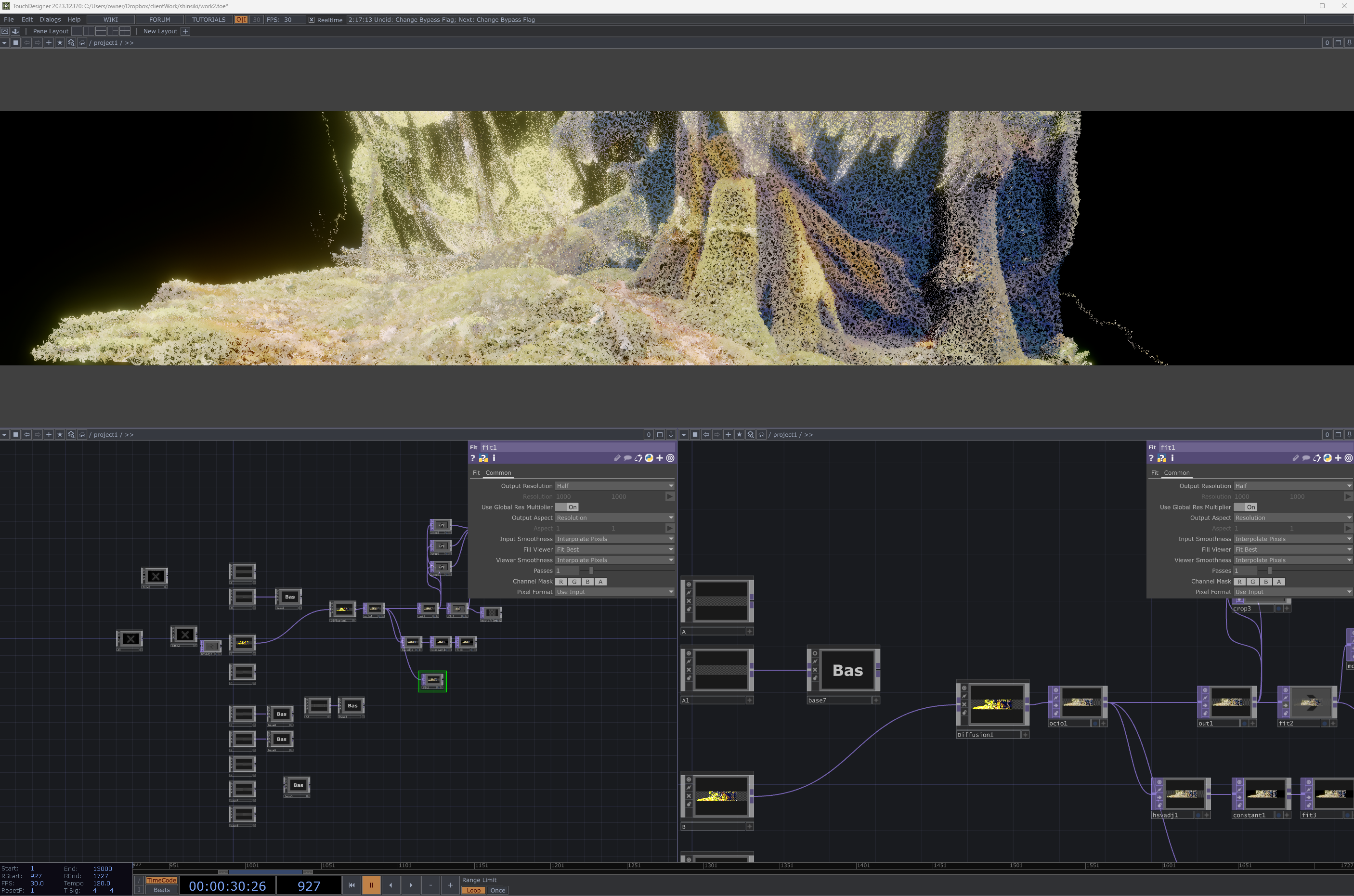

ProgrammingCall for SubmissionsNewsBecome a MemberMerchandise
Rentals + Services
About VIVO
Archive
Video Out Distribution
Donate


Free — Limited Seats
Please RSVP here
VIVO Media Arts and IM4 Media Lab is thrilled to invite you for a lecture and demonstration exploring “transformation” as a core concept in digital art production facilitated by Yota Kobayashi and Ryo Kanda.
One of the key approaches in digital art production involves transforming materials (e.g., visual, sound, light, etc.) and restructuring them into visuals or spaces that convey different meanings. This lecture focuses on the concept of “transformation” as a framework for exploring the foundational ideas and techniques of digital art production. It also presents a demo video created using materials—such as graffiti and landscape photography—specifically sourced from Canada for this session, alongside an overview of the tools and production processes involved. The aim is to provide a structured understanding of both the conceptual and technical basis of digital art.
No prior knowledge of digital art production is necessary to attend this event. Anyone who is interested in creating digital art and TouchDesigner can participate.
Refreshments will be provided.
—
The workshop is supported by VIVO Media Arts Centre, Formscape Arts, and IM4 Media Lab, developed with the participation of the British Columbia Arts Council, Creative BC and the Province of BC.
—
This event is part of the Shiki & Kū installation, taking place at VIVO Media Arts from September 13 to 28, 2025.
VIVO is located in the homelands of the xʷməθkʷəy̓əm (Musqueam) Sḵwx̱wú7mesh (Squamish), and səl̓ílwətaɬ (Tsleil-Waututh) peoples in a warehouse space at 2625 Kaslo Street south of East Broadway at the end of E 10th. Transit line 9 stops at Kaslo Street on Broadway. From the bus stop, the path is paved, curbless, and on a slight decline. The closest skytrain station is Renfrew Station, which is three blocks south-east of VIVO and has an elevator. From there, the path is paved, curbless, and on a slight incline. There is parking available at VIVO, including wheelchair access parking. There is a bike rack at the entrance. The front entrance leads indoors to a set of 7 stairs to the lobby.
A wheelchair ramp is located at the west side of the main entrance. The ramp has two runs: the first run is 20 feet long, and the second run is 26 feet. The ramp is 60 inches wide. The slope is 1:12. The ramp itself is concrete and has handrails on both sides. There is an outward swinging door (34 inch width) at the top of the ramp leading to a vestibule. A second outward swinging door (33 inch width) opens into the exhibition space. Buzzers and intercoms are located at both doors to notify staff during regular office hours or events to unlock the doors. Once unlocked, visitors can use automatic operators to open the doors.
There are two all-gender washrooms. One has a stall and is not wheelchair accessible. The other is a single room with a urinal and is wheelchair accessible: the door is 33 inches wide and inward swinging, without automation. The toilet has 11 inch clearance on the left side and a handrail.
To reach the bathrooms from the studio, exit through the double doors and proceed straight through the lobby and down the hall . Turn left, and the two bathrooms will be on your right side. The closest one has a stall and is not wheelchair accessible. The far bathroom is accessible.
Yota Kobayashi is a soundscape artist specializing in the creation of immersive and interactive soundscapes for audio-visual installations through an integrated practice of sound production, composition, and software development. He holds a Doctor of Musical Arts degree in composition from the University of British Columbia. His artistic research and creative work on human-computer interaction for experiential artwork have been funded by the Social Sciences and Humanities Research Council of Canada (SSHRC), UBC ICICS, the Canada Council for the Arts, Creative BC, the British Columbia Arts Council, and the National Association of Japanese Canadians. His works have been presented internationally at festivals, conferences, and exhibitions. Notable awards include First Prize at Musica Nova (Czech Republic) and First Prize at the Concours Internazionale Luigi Russolo (Italy).
Ryo Kanda (a.k.a. Kezzardrix) is a computer graphics and visual artist based in Tokyo, Japan, specializing in generative visual expression through programming. His work spans live visual performances, music videos, theatre productions, media installations, digital signage, and software development, both in Japan and internationally. He is also active as a member of the black metal unit VMO and HEPIXELS, a visual art project with Satoru Higa. Since 2016, Kanda has been part of INT, the creative division of HIP LAND MUSIC. His accolades include the Award of Distinction at Ars Electronica 2016.